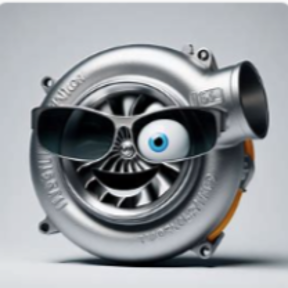Welcome to the Onshape forum! Ask questions and join in the discussions about everything Onshape.
First time visiting? Here are some places to start:- Looking for a certain topic? Check out the categories filter or use Search (upper right).
- Need support? Ask a question to our Community Support category.
- Please submit support tickets for bugs but you can request improvements in the Product Feedback category.
- Be respectful, on topic and if you see a problem, Flag it.
If you would like to contact our Community Manager personally, feel free to send a private message or an email.
Primitive sphere creation from points
 Dean_Gardner
Member Posts: 114 PRO
Dean_Gardner
Member Posts: 114 PRO
Does anyone know of a feature script that can create a 3D sphere from 3 or more points?
Tagged:
0
Best Answer
-
 Jacob_Corder
Member Posts: 139 PRO
Jacob_Corder
Member Posts: 139 PRO
FeatureScript 2075; import(path : "onshape/std/common.fs", version : "2075.0"); annotation { "Feature Type Name" : "Sphere 3 Point" } export const sphereThreePoint = defineFeature(function(context is Context, id is Id, definition is map) precondition { annotation { "Name" : "Points", "Filter" : QueryFilterCompound.ALLOWS_VERTEX, "MaxNumberOfPicks" : 3 } definition.points is Query; } { var pts = [undefined,undefined,undefined]; for(var n=0;n<3;n+=1) { pts[n] =evVertexPoint(context, { "vertex" : qNthElement(definition.points, n) }); } var cir =getCircleFromPoints(pts[0],pts[1],pts[2]); opSphere(context, id, { "radius" : cir.radius, "center" : cir.coordSystem.origin }); }); function getCircleFromPoints(a is Vector, b is Vector, c is Vector) { try silent { var Xa = a[0] / millimeter; var Ya = a[1] / millimeter; var Za = a[2] / millimeter; var Xb = b[0] / millimeter; var Yb = b[1] / millimeter; var Zb = b[2] / millimeter; var Xc = c[0] / millimeter; var Yc = c[1] / millimeter; var Zc = c[2] / millimeter; // Lengths of AB, AC, AC var AB = (((Xa - Xb) ^ 2) + ((Ya - Yb) ^ 2) + ((Za - Zb) ^ 2)) ^ 0.5; var BC = (((Xb - Xc) ^ 2) + ((Yb - Yc) ^ 2) + ((Zb - Zc) ^ 2)) ^ 0.5; var AC = (((Xa - Xc) ^ 2) + ((Ya - Yc) ^ 2) + ((Za - Zc) ^ 2)) ^ 0.5; //Direction cosines of AB(ABi,ABj,ABk) var ABi = (Xb - Xa) / AB; var ABj = (Yb - Ya) / AB; var ABk = (Zb - Za) / AB; //' Direction cosines of AC(ACi,ACj,ACk) //var ACi = (Xc - Xa) / AC; //var ACj = (Yc - Ya) / AC; //var ACk = (Zc - Za) / AC; //' Cosine of angle BAC var cosBAC = (AB ^ 2 + AC ^ 2 - BC ^ 2) / (2 * AB * AC); var AD = cosBAC * AC; var CD = (AC ^ 2 - AD ^ 2) ^ 0.5; //' Position of point D, which is C projected normally onto AB var Xd = Xa + (AD * ABi); var Yd = Ya + (AD * ABj); var Zd = Za + (AD * ABk); //' Direction cosines of CD(Cdi,CDj,CDk) var CDi = (Xc - Xd) / CD; var CDj = (Yc - Yd) / CD; var CDk = (Zc - Zd) / CD; //' Direction cosines of normal to AB and CD //' — to be used for rotations of circle centre var Ni = (ABk * CDj) - (ABj * CDk); var Nj = (ABi * CDk) - (ABk * CDi); var Nk = (ABj * CDi) - (ABi * CDj); //' # Diameter of circumscribed circle of a triangle is equal to the //' the length of any side divided by sine of the opposite angle. //' This is done in a coordinate system where X is colinear with AB, Y is // to CD, //' and Z is the normal (N) to X and Y, and the origin is point A //' R = D / 2 var sinBAC = (1 - cosBAC ^ 2) ^ 0.5; var R = (BC / sinBAC) / 2; //' Centre of circumscribed circle is point E var X2e = AB / 2; var Y2e = (R ^ 2 - X2e ^ 2) ^ 0.5; var Z2e = 0; //' Transform matrix //' Rotations Translations //' —————————————————————————————————————————————— //' ABi , ABj , ABk Xa //' CDi , CDj , CDk Ya //' Ni , Nj , Nk Za //' —————————————————————————————————————————————— //' Position of circle centre in absolute axis system var X_centre = Xa + (X2e * ABi) + (Y2e * CDi) + (Z2e * Ni); var Y_centre = Ya + (X2e * ABj) + (Y2e * CDj) + (Z2e * Nj); var Z_centre = Za + (X2e * ABk) + (Y2e * CDk) + (Z2e * Nk); //' ——————————————————————————————————————————————————————————————————— var circleCenter = vector(X_centre * millimeter, Y_centre * millimeter, Z_centre * millimeter); var radius = pointDistance(circleCenter, a); var plane = try(planeFrom3Points(a, b, c)); if (plane != undefined) { plane.origin = circleCenter; var coordsys = coordSystem(plane); return circle(coordsys, radius); } } return undefined; } export function pointDistance(vec0 is Vector, vec1 is Vector) returns ValueWithUnits { var vec = [vec0[0].value - vec1[0].value, vec0[1].value - vec1[1].value, vec0[2].value - vec1[2].value]; //makeArray(size(vec0), undefined); return sqrt(vec[0]*vec[0] + vec[1] *vec[1] + vec[2] *vec[2]) * meter; } export function planeFrom3Points(pt0 is Vector, pt1 is Vector, pt2 is Vector) { var points = [pt0, pt1, pt2]; var normal = cross(points[2] - points[0], points[1] - points[0]); try silent { //check if the 3 points are on a line; var vec1 = points[0] - points[1]; var vec2 = points[2] - points[1]; if (parallelVectors(normalize(vec1), normalize(vec2))) { return undefined; } } try silent { var ret = plane(points[0], normalize(normal), normalize(points[1] - points[0])); return ret; } return undefined; }This will do it.1
Answers
Is this what you are looking for?
https://cad.onshape.com/documents/a81f647d405a78c5b70bdbde/v/b1e90d8c768f69db42c07f9a/e/bec98f91580bad4c70005038
Or do mean getting passed a bunch coordinates?
Maybe using one of the "3D points" features first and then this should work (haven't tried thought)...
Also Polyheadron:
https://cad.onshape.com/documents/2c40f522f1b5a02f6ce9ce01/w/32e0799ad10a8f40ac24abb5/e/dd23a5b64fbc7cefbf67ffbd?renderMode=0&uiState=64b58578f6ee8b108a11e366
FeatureScript 2075; import(path : "onshape/std/common.fs", version : "2075.0"); annotation { "Feature Type Name" : "Sphere 3 Point" } export const sphereThreePoint = defineFeature(function(context is Context, id is Id, definition is map) precondition { annotation { "Name" : "Points", "Filter" : QueryFilterCompound.ALLOWS_VERTEX, "MaxNumberOfPicks" : 3 } definition.points is Query; } { var pts = [undefined,undefined,undefined]; for(var n=0;n<3;n+=1) { pts[n] =evVertexPoint(context, { "vertex" : qNthElement(definition.points, n) }); } var cir =getCircleFromPoints(pts[0],pts[1],pts[2]); opSphere(context, id, { "radius" : cir.radius, "center" : cir.coordSystem.origin }); }); function getCircleFromPoints(a is Vector, b is Vector, c is Vector) { try silent { var Xa = a[0] / millimeter; var Ya = a[1] / millimeter; var Za = a[2] / millimeter; var Xb = b[0] / millimeter; var Yb = b[1] / millimeter; var Zb = b[2] / millimeter; var Xc = c[0] / millimeter; var Yc = c[1] / millimeter; var Zc = c[2] / millimeter; // Lengths of AB, AC, AC var AB = (((Xa - Xb) ^ 2) + ((Ya - Yb) ^ 2) + ((Za - Zb) ^ 2)) ^ 0.5; var BC = (((Xb - Xc) ^ 2) + ((Yb - Yc) ^ 2) + ((Zb - Zc) ^ 2)) ^ 0.5; var AC = (((Xa - Xc) ^ 2) + ((Ya - Yc) ^ 2) + ((Za - Zc) ^ 2)) ^ 0.5; //Direction cosines of AB(ABi,ABj,ABk) var ABi = (Xb - Xa) / AB; var ABj = (Yb - Ya) / AB; var ABk = (Zb - Za) / AB; //' Direction cosines of AC(ACi,ACj,ACk) //var ACi = (Xc - Xa) / AC; //var ACj = (Yc - Ya) / AC; //var ACk = (Zc - Za) / AC; //' Cosine of angle BAC var cosBAC = (AB ^ 2 + AC ^ 2 - BC ^ 2) / (2 * AB * AC); var AD = cosBAC * AC; var CD = (AC ^ 2 - AD ^ 2) ^ 0.5; //' Position of point D, which is C projected normally onto AB var Xd = Xa + (AD * ABi); var Yd = Ya + (AD * ABj); var Zd = Za + (AD * ABk); //' Direction cosines of CD(Cdi,CDj,CDk) var CDi = (Xc - Xd) / CD; var CDj = (Yc - Yd) / CD; var CDk = (Zc - Zd) / CD; //' Direction cosines of normal to AB and CD //' — to be used for rotations of circle centre var Ni = (ABk * CDj) - (ABj * CDk); var Nj = (ABi * CDk) - (ABk * CDi); var Nk = (ABj * CDi) - (ABi * CDj); //' # Diameter of circumscribed circle of a triangle is equal to the //' the length of any side divided by sine of the opposite angle. //' This is done in a coordinate system where X is colinear with AB, Y is // to CD, //' and Z is the normal (N) to X and Y, and the origin is point A //' R = D / 2 var sinBAC = (1 - cosBAC ^ 2) ^ 0.5; var R = (BC / sinBAC) / 2; //' Centre of circumscribed circle is point E var X2e = AB / 2; var Y2e = (R ^ 2 - X2e ^ 2) ^ 0.5; var Z2e = 0; //' Transform matrix //' Rotations Translations //' —————————————————————————————————————————————— //' ABi , ABj , ABk Xa //' CDi , CDj , CDk Ya //' Ni , Nj , Nk Za //' —————————————————————————————————————————————— //' Position of circle centre in absolute axis system var X_centre = Xa + (X2e * ABi) + (Y2e * CDi) + (Z2e * Ni); var Y_centre = Ya + (X2e * ABj) + (Y2e * CDj) + (Z2e * Nj); var Z_centre = Za + (X2e * ABk) + (Y2e * CDk) + (Z2e * Nk); //' ——————————————————————————————————————————————————————————————————— var circleCenter = vector(X_centre * millimeter, Y_centre * millimeter, Z_centre * millimeter); var radius = pointDistance(circleCenter, a); var plane = try(planeFrom3Points(a, b, c)); if (plane != undefined) { plane.origin = circleCenter; var coordsys = coordSystem(plane); return circle(coordsys, radius); } } return undefined; } export function pointDistance(vec0 is Vector, vec1 is Vector) returns ValueWithUnits { var vec = [vec0[0].value - vec1[0].value, vec0[1].value - vec1[1].value, vec0[2].value - vec1[2].value]; //makeArray(size(vec0), undefined); return sqrt(vec[0]*vec[0] + vec[1] *vec[1] + vec[2] *vec[2]) * meter; } export function planeFrom3Points(pt0 is Vector, pt1 is Vector, pt2 is Vector) { var points = [pt0, pt1, pt2]; var normal = cross(points[2] - points[0], points[1] - points[0]); try silent { //check if the 3 points are on a line; var vec1 = points[0] - points[1]; var vec2 = points[2] - points[1]; if (parallelVectors(normalize(vec1), normalize(vec2))) { return undefined; } } try silent { var ret = plane(points[0], normalize(normal), normalize(points[1] - points[0])); return ret; } return undefined; }This will do it.